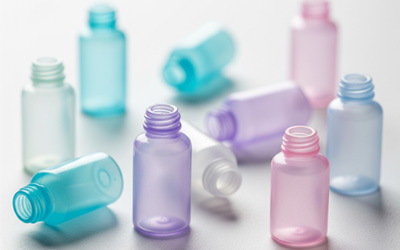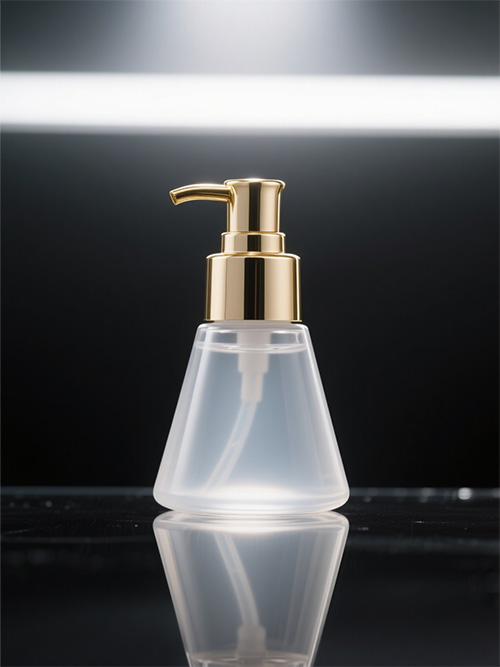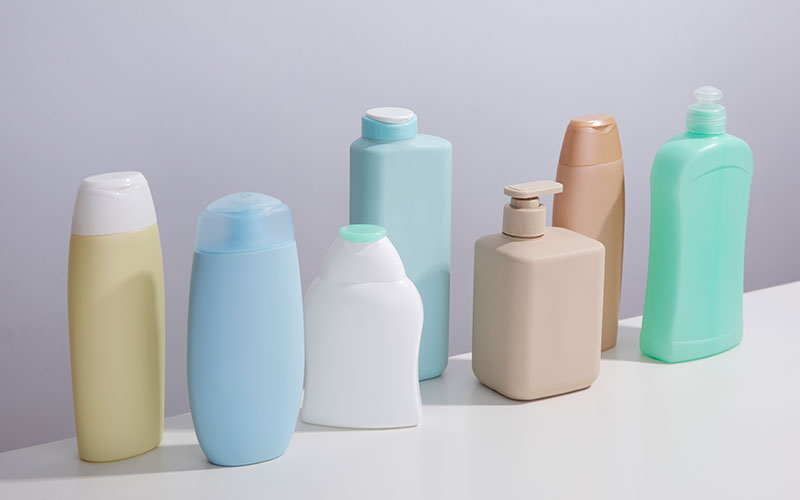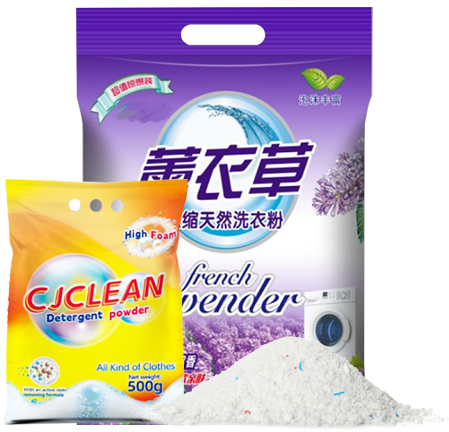Table of Contents
Introduction

In today’s fast-paced industrial landscape, product safety is more than just a regulatory requirement; it’s a fundamental pillar of consumer trust, brand reputation, and market success. From precision medical devices to everyday consumer products and packaging solutions, the integrity and reliability of every component is critical. Traditional manufacturing methods, while effective, often require long tooling and production preparation times, creating bottlenecks that can delay critical safety updates. In an industry where rapid innovation and stringent safety standards coexist, rapid injection molding offers a solution that can be a game-changer.
This blog post will explore how rapid injection molding can significantly improve product safety in daily chemical packaging. We’ll examine its speed and flexibility, which can speed up testing.
At Shenlong Packaging, we have over two decades of experience in packaging and daily chemical product manufacturing, and we know that safety cannot be compromised. Our expertise in injection molding ensures that we provide personalized solutions that prioritize safety and compliance, helping your products exceed standards and giving you peace of mind.
Understanding Rapid Injection Molding: Speed Meets Precision
Before diving into its safety benefits, it’s essential to grasp what rapid injection molding entails and how it differs from conventional injection molding processes. At its core, it’s about accelerating the path from design to physical part, especially for prototypes, low-volume production, and iterative design improvements, which are crucial for timely safety upgrades in daily chemical packaging.
The Core Process of Injection Molding
Injection molding is a manufacturing process that produces parts by injecting molten material into a mold. After the material cools and solidifies, the part is ejected, and the process repeats. This method is highly effective for mass-producing identical parts with high precision and consistency, vital for components like bottle caps, dispensing pumps, and spray nozzles used in daily chemical products.
The “Rapid” Difference
The “rapid” aspect of rapid injection molding primarily refers to the accelerated tooling and production phases. While traditional injection molding often requires highly durable, expensive steel molds that can take weeks or even months to produce, rapid injection molding often utilizes:
- Softer Tooling Materials: Such as aluminum or softer steel alloys. These materials are quicker and less expensive to machine, drastically cutting down mold creation time from months to days or a few weeks. This speed allows for rapid development of new closure designs or container features for daily chemical products.
- Optimized Tooling Design: Leveraging advanced CAD/CAM software and automated machining processes to streamline mold design and fabrication. This precision is critical for complex safety features like child-resistant mechanisms.
- Quicker Iterations: The faster tooling allows for multiple design iterations to be prototyped and tested in real materials much more quickly than traditional methods. This agile approach is critical for refining designs for optimal safety and performance, especially when developing tamper-evident seals or specific dispensing systems for daily chemicals.
- Low-Volume Production: Ideal for producing batches ranging from dozens to thousands of parts, serving as a bridge between prototyping and full-scale mass production. This is useful for pilot runs of new packaging components for personal care items.
This speed doesn’t come at the expense of quality. Parts produced via rapid injection molding are made from production-grade resins, meaning they possess the actual mechanical properties, chemical resistance, and aesthetic qualities of final production parts, ensuring that safety features are robust and reliable.
How Rapid Injection Molding Directly Enhances Product Safety

The inherent speed and flexibility of rapid injection molding translate directly into several key advantages for improving product safety across diverse applications, particularly within the daily chemical product industry.
1. Accelerated Prototyping and Testing with Production Materials
One of the most significant safety benefits of rapid injection molding is its ability to produce functional prototypes using actual production-grade materials in a fraction of the time. Unlike 3D printing, which often uses different materials with varying mechanical properties, parts from rapid injection molding behave exactly as final products would. This allows engineers and product developers in the daily chemical sector to:
- Conduct Real-World Performance Tests: Test stress points in caps, fatigue resistance of hinges, or chemical resistance of dispensing nozzles under actual operating conditions with the daily chemical product.
- Identify Design Flaws Early: Quickly uncover potential safety risks related to material weakness (e.g., a cap cracking during use), structural failure (e.g., a pump mechanism breaking), or functional inefficiencies (e.g., a child-resistant closure that’s too easy to open) before mass production.
- Validate Material Choices: Confirm that the chosen polymer or plastic alloy performs as expected in terms of strength, impact resistance, and chemical compatibility with the specific daily chemical formulation.
This early and accurate testing drastically reduces the likelihood of safety-critical defects appearing in mass-produced items like shampoo bottles, detergent caps, or lotion pumps.
2. Enables Faster Design Iterations for Safety Improvements
Safety is an iterative process. When a potential flaw is identified, or a new safety standard emerges for daily chemical packaging, the ability to quickly modify a design and produce a new prototype is invaluable. Rapid injection molding facilitates this by:
- Reducing Tooling Modification Time: Molds made from softer materials can be modified or even entirely re-machined much faster than hardened steel molds. This means if a child-resistant closure needs a slight design tweak to meet a new certification, it can be done rapidly.
- Accelerating Design-Test-Refine Cycles: This allows companies to implement safety improvements, test them rigorously, and integrate feedback at an unprecedented pace. This agility is crucial for daily chemical products where safety regulations for packaging are constantly evolving, such as those related to child safety or chemical resistance.
3. Facilitates Compliance with Evolving Regulations
Industries producing daily chemical products are subject to strict and frequently updated safety regulations, especially concerning packaging. The speed of rapid injection molding allows manufacturers to:
- Quickly Adapt to New Standards: Produce packaging components (like specific closure types or container designs) that comply with the latest safety mandates without extensive delays. This is vital for maintaining market access.
- Generate Compliance Samples: Rapidly create batches of components for certification and regulatory approval processes. For example, quickly producing samples of new tamper-evident seals for testing by regulatory bodies.
- Reduce Time-to-Market for Safer Products: Accelerate the introduction of new daily chemical products or improved packaging designs that meet or exceed current safety benchmarks, thereby getting safer solutions into consumers’ hands faster.
4. Supports Risk Mitigation through Thorough Validation
Before a daily chemical product hits the market, extensive risk assessment and validation of its packaging are crucial. Rapid injection molding aids this by:
- Providing Test-Ready Components: Enabling comprehensive testing scenarios (e.g., drop tests for bottles, leak tests for closures, force tests for child-resistant mechanisms, chemical resistance tests for materials) on actual production-grade parts.
- Generating Data for Safety Documentation: Supplying verifiable data from real-material tests to support safety declarations, material safety data sheets (MSDS) for the packaging components, and certifications required for daily chemical products.
- Identifying Failure Modes: Pinpointing how and why a part might fail under specific conditions (e.g., a pump failing after repeated use, a cap cracking due to chemical stress), allowing for proactive design adjustments to prevent such failures in end-use, thereby enhancing consumer safety.
5. Ensures Consistent Part Quality and Performance in Early Production
While often associated with prototyping, rapid injection molding is also used for low-volume production, which is common for new product launches or specialized daily chemical lines. This means that early production runs can benefit from:
- High Repeatability: Producing consistent, high-quality parts that meet precise specifications, reducing variations that could lead to safety issues (e.g., inconsistent cap torque, leaky seals).
- Bridging the Gap to Mass Production: Providing a reliable supply of safe packaging components (like caps, inserts, or small bottles) while larger, more complex tooling for full-scale mass production is being fabricated, ensuring a continuous supply of safe packaging for daily chemical goods.
6. Supports Specialized Materials for Enhanced Safety
The versatility of rapid injection molding extends to processing a wide array of specialized engineering-grade plastics and polymers, which are crucial for safety in daily chemical packaging applications:
- Chemically Resistant Polymers: Essential for packaging aggressive daily chemicals like bleach, strong detergents, or industrial cleaners, preventing bottle degradation, cracking, or leaching into the product.
- Barrier Materials: For sensitive daily chemical formulations (e.g., those with strong fragrances or volatile compounds), preventing oxygen ingress or chemical permeation that could compromise product efficacy or safety.
- Impact-Resistant Polymers: For packaging that might be dropped in a bathroom or kitchen, ensuring containers and caps don’t shatter or crack, preventing spills or exposure to hazardous contents.
- Food-Grade/Cosmetic-Grade Materials: For personal care and cosmetic product packaging, ensuring no harmful substances migrate from the plastic to the product.
The ability to quickly mold these specialized materials allows for the rapid development and deployment of daily chemical products with inherent safety features built into their packaging.
Key Considerations in Rapid Injection Molding for Safety-Critical Parts

Achieving high levels of product safety through rapid injection molding requires careful attention to several critical factors, from material selection to quality control, especially when dealing with daily chemical product packaging.
Material Selection: Beyond Basic Properties for Daily Chemicals
Choosing the right material is paramount, particularly for packaging that will house daily chemical products. Beyond standard mechanical properties (strength, flexibility), considerations include:
- Chemical Compatibility: This is the most crucial factor for daily chemical packaging. The material must not react with, degrade from, or leach substances into the specific chemical formulation (e.g., acids, alkalis, solvents, fragrances, dyes). Incompatible materials can lead to packaging failure, product contamination, or dangerous reactions.
- Barrier Properties: For products sensitive to oxygen, moisture, or light (e.g., certain cleansers, lotions with active ingredients), the packaging material needs to provide an adequate barrier to maintain product stability and safety over its shelf life.
- Thermal Properties: How the material behaves under temperature extremes it might experience during storage or transport (e.g., in a hot warehouse or cold vehicle).
- UV Stability: For products stored in sunlight, preventing material degradation that could compromise structural integrity or release unwanted chemicals.
- Regulatory Compliance: Ensuring the chosen material meets specific industry standards (e.g., FDA for food/cosmetic contact, EPA for certain chemical packaging) and regional regulations.
Manufacturers must work closely with material suppliers and conduct rigorous testing to select resins that meet all safety and performance specifications for the intended daily chemical application.
Design for Manufacturability (DFM) with a Safety Lens
Even with rapid tools, good design practices are essential. DFM in rapid injection molding considers how part geometry, wall thickness, and draft angles impact both manufacturability and the final part’s safety, especially for closures and containers:
- Eliminating Weak Points: Designing caps, hinges, or dispensing nozzles to avoid stress concentrations that could lead to fracture under load or repeated use.
- Ensuring Proper Fill: Designing for uniform wall thickness and smooth transitions to prevent voids or short shots that compromise structural integrity, leading to leaks or breakage.
- Optimizing Gate Locations: Strategically placing gates to ensure complete mold fill and minimize weld lines, which can be points of weakness, especially in pressure-bearing components.
- Incorporating Safety Features: Ensuring child-resistant mechanisms are robust but manufacturable, and tamper-evident bands form cleanly.
Iterative design, enabled by the speed of rapid injection molding, allows for continuous refinement of these aspects.
Tooling Design and Quality
While rapid injection molding often uses softer tooling, the quality of the mold design and fabrication remains critical for part precision and consistency, vital for safe daily chemical packaging. Even small imperfections in the mold can translate to defects in the final part that compromise safety (e.g., a rough edge on a child-resistant cap, an inconsistent seal surface). Careful attention to venting, cooling channels, and ejection mechanisms is vital for consistent, high-quality output.
Quality Control and Inspection Protocols
Rigorous quality control (QC) is non-negotiable for safety-critical parts, particularly in daily chemical packaging. For rapid injection molding, QC should include:
- Dimensional Inspection: Using CMM (Coordinate Measuring Machine) or optical scanning to verify part dimensions against CAD models, ensuring precise fit for caps and dispensing systems.
- Visual Inspection: Checking for surface defects, short shots, flash, or contamination that could compromise seals or appearance.
- Functional Testing: Performing tests specific to the part’s function (e.g., torque testing for caps, dispensing accuracy for pumps, leak tests for containers).
- Mechanical Testing: Performing destructive or non-destructive tests (e.g., tensile strength of plastic, impact resistance of bottle, fatigue testing of a flip-top hinge) on a sample basis.
- Material Verification: Ensuring the correct resin is used and has not been degraded during processing, confirming its suitability for chemical contact.
The speed of rapid injection molding allows for quicker feedback loops, enabling immediate adjustments if quality deviations are detected, thereby maintaining high safety standards for daily chemical products.
Applications of Rapid Injection Molding in Safety-Critical Daily Chemical Packaging

The versatility of rapid injection molding makes it invaluable across a spectrum of daily chemical packaging applications where product safety and consumer interaction are paramount.
Tamper-Evident Features
Ensuring a product hasn’t been opened or contaminated before purchase is vital for consumer safety, especially in personal care and liquid cleaning products.
- Breakaway Bands: Integrated into caps or closures, these bands snap off when first opened, providing clear visual evidence of tampering. Rapid injection molding ensures the precise thin-wall sections needed for reliable breaking.
- Seals and Liners: Molded inserts or liners within caps that create an airtight seal, often with an induction foil layer. Their precision molding is crucial for effective sealing.
Precision Dispensing Systems (Pumps, Sprayers, Dosing Caps)
Accurate and safe dispensing is critical for many daily chemical products to prevent overuse, spills, or direct contact with concentrated formulas.
- Pumps for Lotions & Soaps: Components like plungers, springs, and nozzles require high precision for consistent dosing and drip-free operation.
- Sprayers for Cleaners: Fine mist sprayers or directional sprayers for cleaning products need precise internal mechanisms to function correctly and safely.
- Dosing Caps: For concentrated detergents or specialized liquids, these caps often have measuring chambers that must be molded with high accuracy.
Rapid injection molding allows for quick prototyping and refinement of these complex multi-part systems, ensuring safe and effective delivery of the product.
Durable & Chemically Resistant Container Components
While bottles are often blow molded, other crucial parts like caps, closures, and certain inserts are injection molded.
- Robust Caps: Caps for large detergent bottles or industrial cleaners must be durable, resistant to chemical degradation, and provide a secure seal under various conditions.
- Specialized Inserts: Components for drip-free pouring or specific flow control, requiring precise fit and chemical resistance.
- Material Compatibility Testing: Using rapid injection molding, different material prototypes can be quickly exposed to the actual daily chemical product to test for long-term compatibility, preventing issues like stress cracking or material breakdown.
Early Identification of Packaging Flaws
The speed of rapid injection molding allows daily chemical product manufacturers to test entire packaging systems (bottle, cap, pump) much earlier in the development cycle. This means:
- Leak Testing: Rapidly produced prototypes can undergo rigorous leak testing with the actual product formulation.
- Drop Testing: Assessing the integrity of the full package when dropped from various heights.
- User Experience Testing: Observing how consumers interact with the closure and dispenser, identifying any safety or usability issues before committing to expensive production tooling.
This proactive approach significantly reduces the risk of packaging failures that could lead to product damage, consumer injury, or costly recalls for daily chemical brands.
The Future of Product Safety and Rapid Injection Molding in Daily Chemical Packaging

The intersection of advanced materials, smart manufacturing, and the drive for greater product integrity will continue to define the future of rapid injection molding and its role in boosting safety within daily chemical packaging.
Advanced Materials for Enhanced Chemical Safety
Ongoing research into advanced polymers and specialized composites will open new frontiers for safety-critical packaging components. Materials with enhanced barrier properties against chemical permeation, improved resistance to extreme temperatures or UV degradation, or inherently antimicrobial properties will enable the creation of even safer packaging for sensitive or hazardous daily chemical formulations. Rapid injection molding will be crucial for quickly testing and implementing these new material innovations into production.
Customization and Personalization for Targeted Safety
As consumer demand for customized and personalized daily chemical products grows, rapid injection molding will be key to producing low-volume, highly specialized safety components. This could include bespoke child-resistant features for specific product lines, custom-designed dispensing systems for niche applications, or unique tamper-evident solutions. All these highly specialized parts can be manufactured efficiently and to high safety standards, addressing unique market needs.
Circular Economy and Sustainable Safety in Packaging
The push for a circular economy will also influence rapid injection molding for safety-critical packaging. This involves:
- Designing for Disassembly: Creating packaging components that can be easily separated into their constituent materials for recycling.
- Utilizing Recycled Content with Safety Assurance: Incorporating post-consumer recycled materials into packaging components where safety properties are not compromised and meet regulatory standards for chemical contact.
- Developing Recyclable Polymers for Complex Parts: Focusing on mono-material solutions that simplify the recycling process for complex injection-molded parts (e.g., all-PE pumps).
Ensuring product safety while simultaneously minimizing environmental impact will be a defining challenge and opportunity for rapid injection molding in daily chemical packaging.
Conclusion
The profound impact of rapid injection molding on the safety of daily chemical packaging is obvious. It can accelerate real material testing, speed up safety improvements, and help adapt to changing regulations. This agility is critical to reliable distribution systems, helping to build consumer trust and bring safer products to market faster.
At Shenlong Packaging, product safety is at the core of brand integrity. With more than two decades of professional experience in packaging and daily chemical product manufacturing, our injection molding process always prioritizes the highest safety standards for your components. If you are looking for a partner committed to speed, precision and safety in daily chemical packaging, please contact us today. Let us escort your innovation.
FAQ
What makes rapid injection molding “rapid” for daily chemical packaging components?
The “rapid” aspect of rapid injection molding for daily chemical packaging primarily comes from the accelerated production of molds. It typically uses softer, more easily machinable for tooling, which significantly reduces mold fabrication time from months to days or a few weeks. This speed allows for quicker design iterations, prototyping, and low-volume production of components like child-resistant closures, dispensing pumps, and specialized caps, unlike traditional methods that use hardened steel molds with much longer lead times.
How does rapid injection molding improve the safety of daily chemical product packaging during the design phase?
Rapid injection molding significantly improves daily chemical packaging safety during the design phase by enabling the quick creation of functional prototypes from actual production materials. This allows engineers to perform rigorous real-world testing early in the development cycle. Any design flaws or potential safety risks related to material weakness (e.g., a cap cracking) or structural integrity (e.g., a faulty pump mechanism) can be identified and addressed much faster, preventing costly and dangerous issues in mass production.
Does rapid injection molding compromise the quality or chemical resistance of packaging components?
No, rapid injection molding does not inherently compromise part quality or chemical resistance when done correctly. While it often uses softer tooling materials for speed, the parts themselves are molded from the same production-grade resins used in traditional injection molding. This means the final packaging components possess identical mechanical properties, chemical resistance, and performance characteristics as mass-produced items, ensuring safety and reliability for daily chemical products.
How does rapid injection molding help daily chemical product manufacturers with regulatory compliance?
Rapid injection molding significantly aids regulatory compliance by allowing daily chemical manufacturers to quickly adapt to evolving safety standards for packaging. The accelerated tooling and production times mean that components can be rapidly redesigned, prototyped, and tested to meet the latest mandates, such as those for child safety or specific material requirements. This facilitates the generation of compliance samples for certification and reduces the time needed to introduce safer, compliant daily chemical products to the market.

